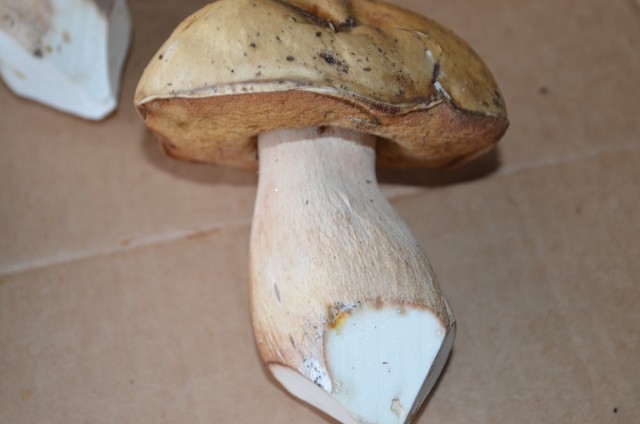

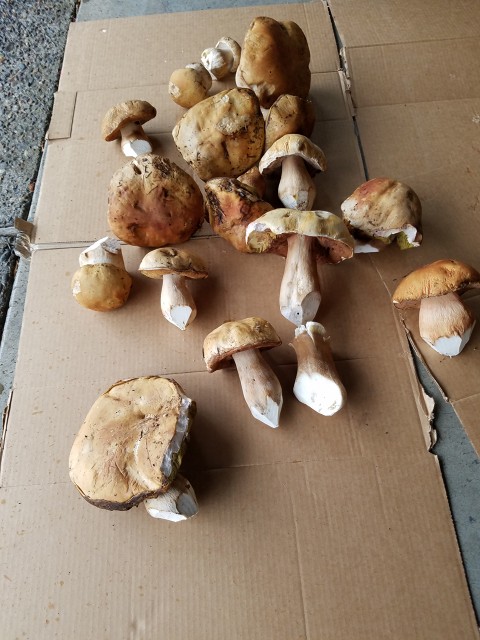
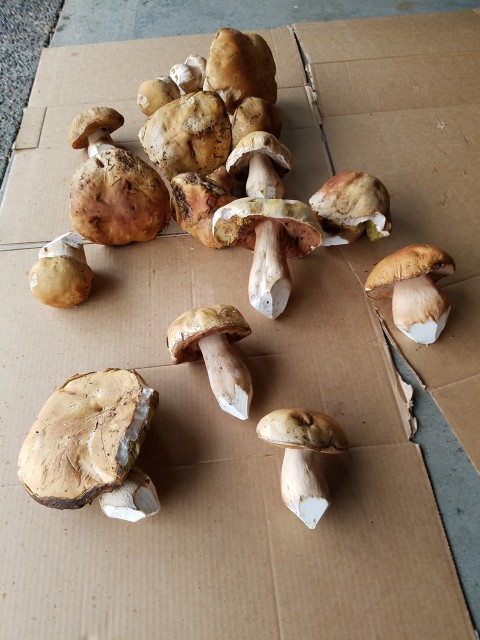
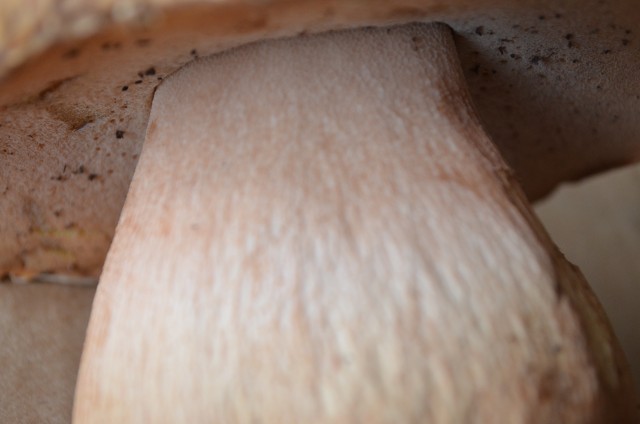
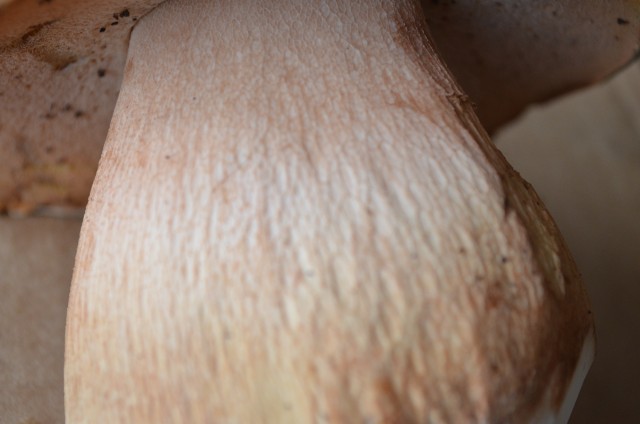
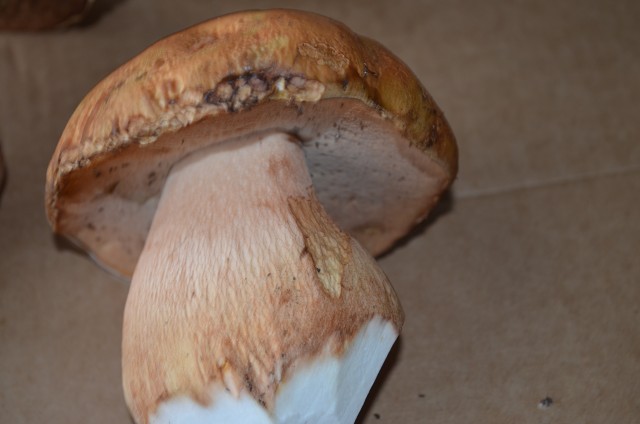

Boletus edulis
found 10/04/2018
Wind River Rd - towards Mt. Adams
Known by various names:
Porcini (Italian), Cep (French) and Steinpilz (German)
also: King, and Penny bun
 |
 |
 |
 |
 |
 |
 |
 |
Below shows what we did with the above mushrooms
 |
 |
 |
 |
Comments re ID of Boletis edulis
1) The stipe is finely reticulated meaning it has a net shaped
raised pattern on the surface. The reticulation is most pronounced
near the top. The stipe is larger at the bottom than at the top.
2) The flesh does not change color when the mushroom is sliced,
and its surfaces do not bruise on handling.
(from MushroomExpert.com
3)The pore surface is initially white, with "stuffed" pores--but
as the mushroom matures the pores become more visible and the pore surface
becomes greenish yellow.
4)The mushroom cap will look like a slightly greasy bun and the
colour can range from yellow brown to a reddish brown.
When cut, the flesh should remain white.
5) Boletus edulis is distinguished by a combination of characters: substantial size, a
smooth to wrinkled brown to reddish-brown cap surface,
drab white pores becoming yellowish olive in age,
a usually club-shape stipe with distinctive white reticulations at the apex,
mild taste, and absence of color changes.
6)A close relative is Boletus regineus (Queen bolete) which differs in having a darker cap with a whitish wash when young, and occurs with mixed hardwoods as opposed to pines.
From WWW.mykoweb.com
7) In Summer and early Fall you may find Tylopilus felleus,
the bitter bolete. It is usually tan or reddish tan with a similar
colored stem and fairly prominent reticulation.
The pores often have a pinkish tinge.
It is very similar to B. edulis in appearance but has a truly unpalatable
level of bitterness. Early in the season it is best to taste a very
small bit of flesh from your finds.
You will spit out T. felleus immediately.

1. |

2. |

3. |

4. |

5. |

6. |

7. |

8. |

9. |

10. |

11. |

12. |

13. |

14. |

15. |

16. |

17. |

18. |

19. |

20. |

21. |

22. |

23. |

24. |

25. |

26. |

27. |

28. |

29. |

30. |

31. |

32. |